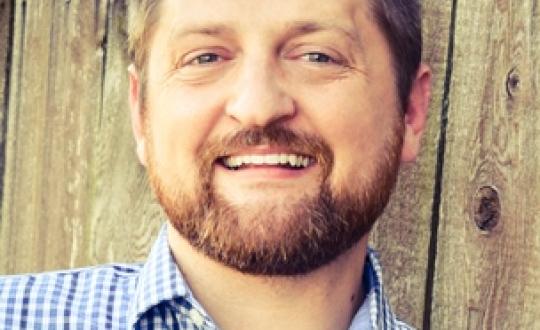Image


An official website of the United States government
Here’s how you know
Official websites use .gov
A .gov website belongs to an official government organization in the United States.
Secure .gov websites use HTTPS
A lock (
) or https:// means you’ve safely connected to the .gov website. Share sensitive information only on official, secure websites.


As a 21-year-old junior in college, I was deployed to Iraq. That call came right in the middle of the first semester. I went from being a college student sitting in classrooms to patrolling the streets of Iraq. My very first day in country we took mortar fire and the first week on patrol my truck was hit by an I.E.D. (Improvised Explosive Devise). Big change from being in the classroom and worrying about getting homework done!
After a year-long deployment, I returned home mid-summer and jumped right back into college, picking up where I left off. Since it was such a long deployment all of my friends had just graduated. Now I was older than the other students, didn’t have any friends, my life experiences were like no other, and I was still figuring out how to make the adjustment back to civilian life.
LISTEN: Dave Closson talks about what campus prevention professionals should know about military vets.
I felt alone, but today our student veterans certainly are not alone. The U.S. Department of Veterans Affairs states there are more than 1 million veterans using their education benefits, most are between the ages of 24-40, and 62 percent are first-generation students. This influx of student veterans adds another scope to your prevention efforts. The Department of Veteran Affairs has developed the VA Campus Toolkit which has many great resources for supporting student veterans on your campus.
I’d like to share some thoughts from my experience as a student veteran and now working in substance misuse prevention to help you serve the student veterans on your campus.
Ultimately, hold true to the Strategic Prevention Framework; let data and collaboration lead the way!
Dave Closson is a national expert on college substance misuse prevention and law enforcement. He is the author of Motivational Interviewing for Campus Police and was named to the “Top 40 Under 40 Military Class of 2016” by Military Transition News. Dave was previously a Training/Technical Assistance Specialist for SAMHSA’s Center for the Application of Prevention Technologies (CAPT). Before joining CAPT, Dave was Assistant Director of the Illinois Higher Education Center for Alcohol, Other Drug, and Violence Prevention. Dave brings a unique experience to substance misuse prevention, having served as a campus police officer at Eastern Illinois University. Dave was deployed as part of Operation Iraqi Freedom. While spending a year in Iraq with his infantry battalion and his recon team, he earned the Combat Infantryman’s Badge and was awarded two Army Commendation Medals (one for valor and one for meritorious service).
